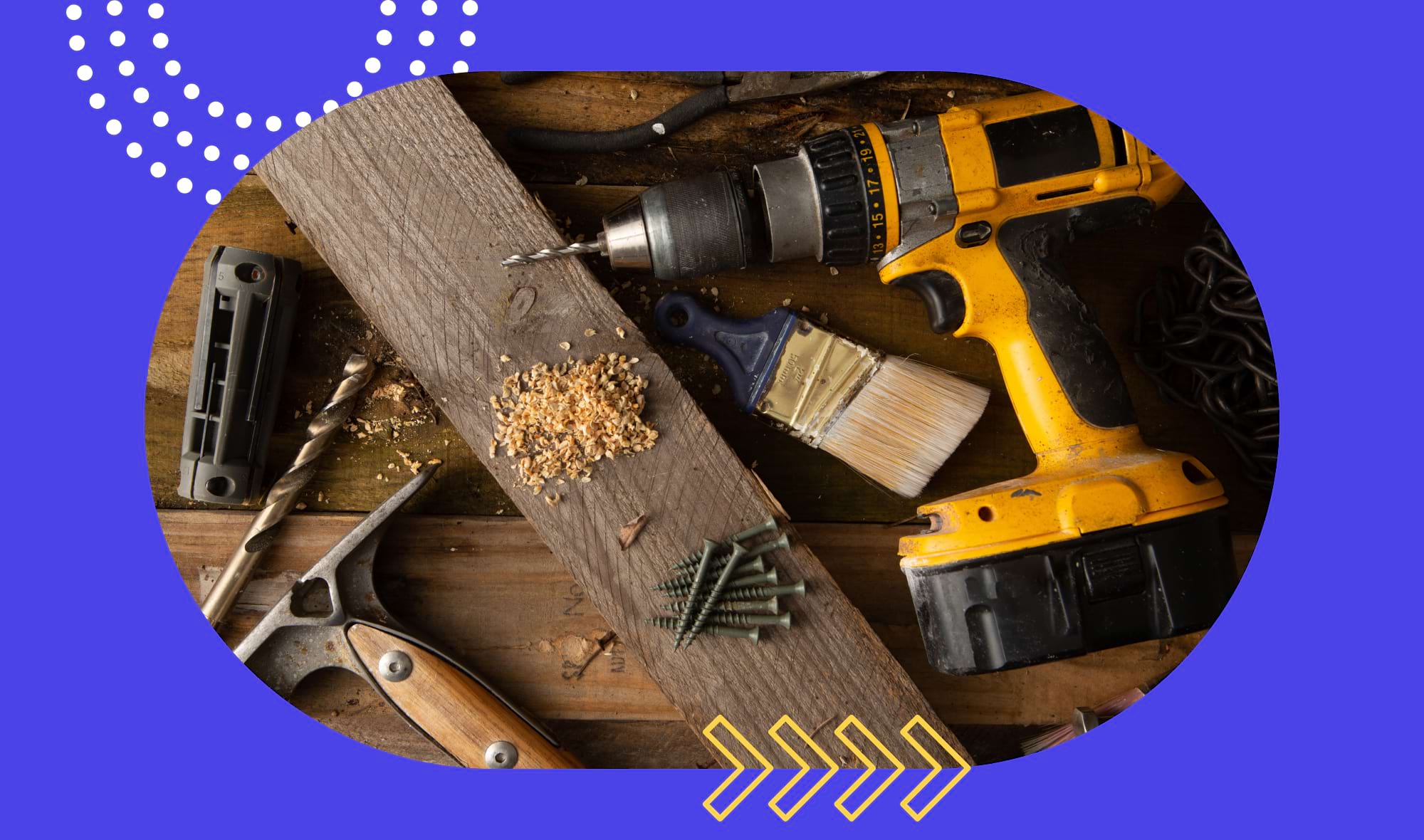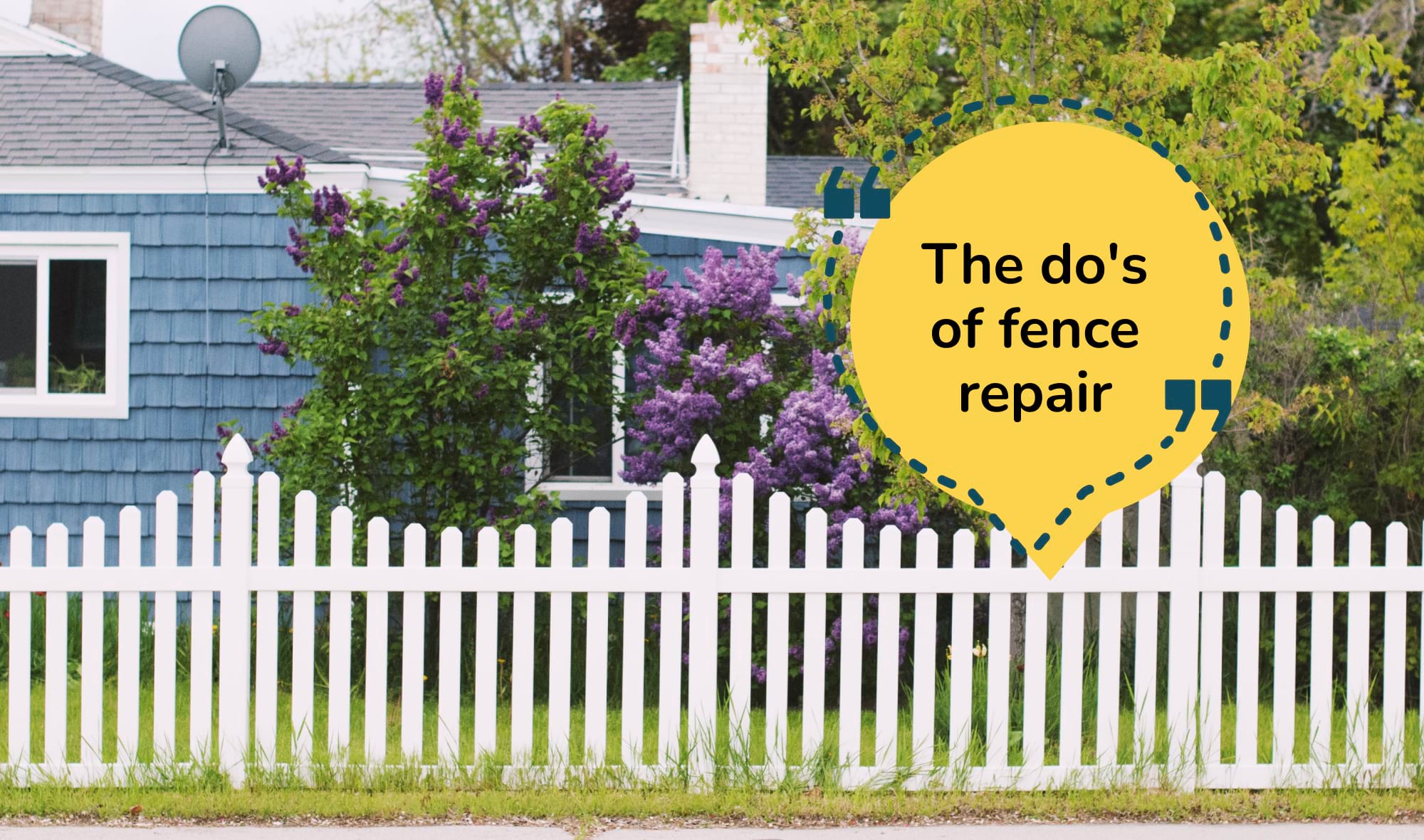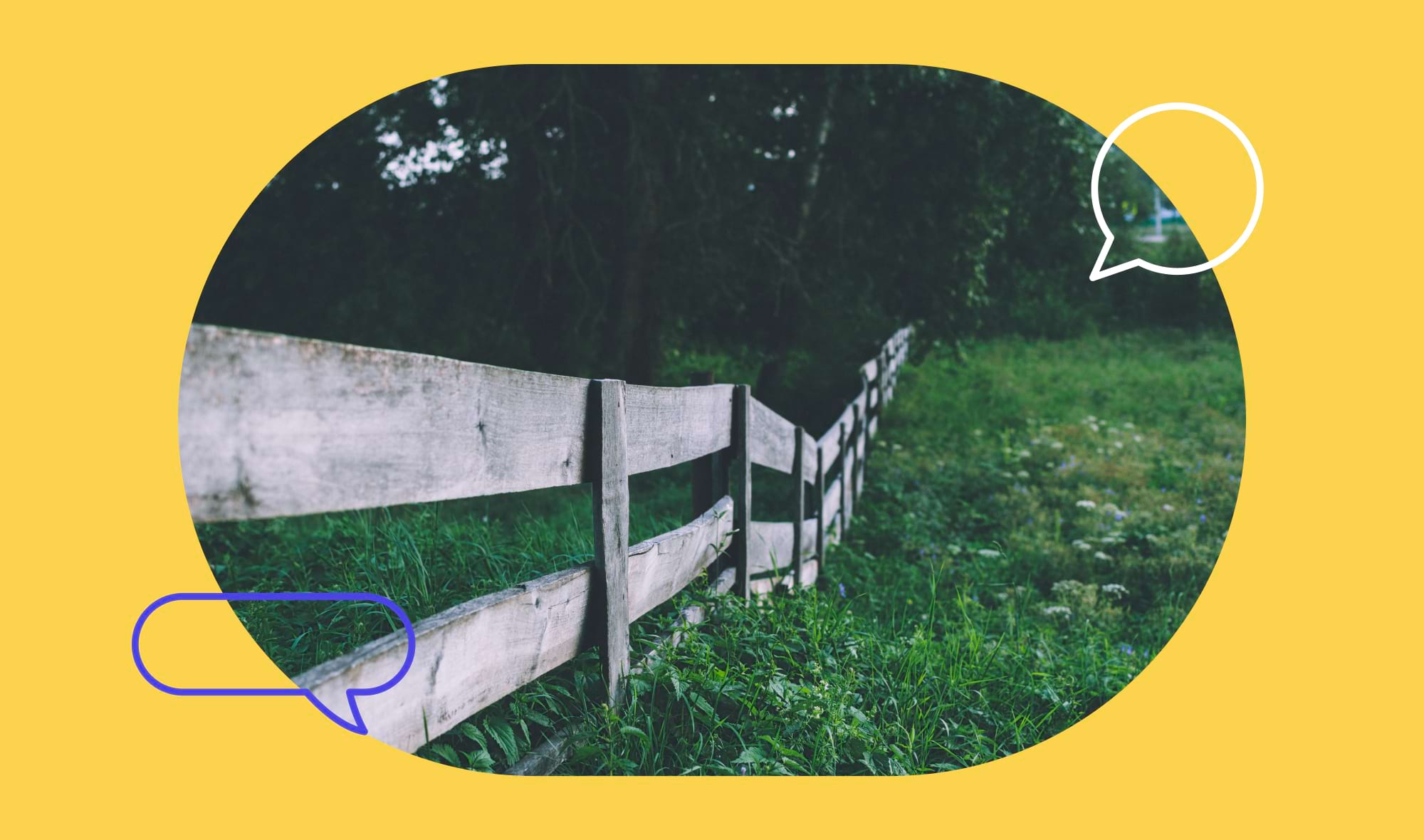The do's and don'ts of fence repairing: a comprehensive guide
By HeyHome • May 22, 2023

Fences are an essential aspect of any home's exterior, providing privacy, security, and a sense of boundary to your property. However, like any other part of your home, fences require regular maintenance and repair to keep them in good condition. Neglecting your fence can lead to costly and time-consuming repairs in the long run. That's why it's crucial to be aware of the do's and don'ts of fence repair to ensure your fence stays strong and sturdy for years to come.
In this comprehensive guide, we'll explore the importance of maintaining your fence and the common mistakes to avoid when repairing it. Whether you're a DIY enthusiast or seeking professional help, this guide will equip you with the knowledge and tools to take care of your fence properly. So let's dive in and discover the do's and don'ts of fence repairing!
Join our newsletter
Stay on top of the latest in landscaping and lawn care with one valuable tip right in your inbox every Saturday morning.
The do's of fence repair

Conduct regular inspections
During your inspection, you should look for signs of wear and tear such as cracks, rot, or loose boards. You should also check the fence's posts and make sure they are sturdy and firmly anchored in the ground. If you notice any significant damage or instability, it's best to seek professional help to address the issue.
Regular inspections
Regular inspections also provide an opportunity to clean and maintain your fence properly. Cleaning your fence regularly helps prevent mold, mildew, and other harmful organisms from growing on it, which can lead to rot and decay. Regular maintenance can also help preserve the fence's appearance, protecting it from fading, peeling, or chipping paint.
Use the right tools and materials

Depending on the type of fence you have and the repair needed, you may need different tools. Some basic tools you may need include a hammer, screwdriver, pliers, saw, and drill. If you're unsure of what tools to use, consult with a professional or research online before starting the repair.
Choosing the right materials for your fence repair is equally important. The materials should be appropriate for the type of fence you have and the specific repair needed. For example, if you have a wooden fence, using high-quality wood and sealant is essential for preventing rot and decay.
Seek professional help when necessary
While DIY fence repair can be a cost-effective solution, there are times when seeking professional help is necessary. Here are some scenarios where it's best to leave fence repair to the professionals:
Structural damage:
If your fence has significant structural damage such as broken or rotted posts, it's best to seek professional help. Structural issues can compromise the fence's stability and safety, and a professional can assess the damage and recommend the best course of action.
Electrical or plumbing issues:

If your fence has electrical or plumbing components such as outdoor lighting or sprinkler systems, it's best to seek professional help. A professional can ensure that the repairs are done safely and correctly, without damaging the components.
Read our guide on DIY sprinkler systems for more information.
Large or complex repairs:
If your fence has large or complex repairs such as replacing a large section of the fence or installing a gate, it's best to seek professional help. These repairs require specialized tools and expertise that may be beyond the scope of a DIY project.
Lack of experience:
If you do not feel confident in your handyman skills, it's best to contact a professional. Attempting to mend a fence without the proper knowledge and experience can cause further damage to the fence and put you at risk of injury.
The don'ts of fence repair

Neglecting to follow safety precautions
One of the most important safety precautions to take when repairing a fence is to wear appropriate safety gear. This includes goggles, gloves, sturdy footwear, and a dust mask if needed. Safety gear can protect you from flying debris, sharp objects, and harmful chemicals, preventing injuries and health hazards.
Make sure to be aware of your surroundings and any potential hazards, such as uneven ground, sharp objects, or nearby power lines. Failing to be aware of your surroundings can lead to tripping, falling, or other accidents.
Attempting to fix a fence that is too damaged or structurally unsound

Knowing the signs that your fence is beyond repair is essential for making informed decisions about fence repair. Leaning or buckling, broken or rotted posts, extensive water damage, termite infestation, and severe weather damage are all signs of a fence being too far gone.
Attempting to repair a fence in these conditions can be dangerous and ineffective. If you're unsure about the extent of the damage or the repair needed, consult with a professional before starting the repair. A professional can assess the damage and recommend the best course of action. By taking care of your fence and addressing any issues promptly, you can extend its lifespan and maintain its aesthetic appeal.
Join our newsletter
Stay ahead of the curve in all things outdoor.
Get the inside scoop on the latest landscaping, lawn care, and fencing trends with 1 actionable tip every Saturday morning.
Painting or staining without properly cleaning and treating the fence first
A fence is exposed to a variety of external factors, such as sunlight, rain, and wind, that can cause it to deteriorate over time. Dirt, debris, and mildew can accumulate on the fence's surface, which can prevent the paint or stain from adhering properly. Additionally, untreated wood can absorb moisture, which can cause it to rot or warp over time. Therefore, it's essential to properly clean and treat your fence before painting or staining it.
Properly cleaning and treating your fence involves several steps, including power washing, scrubbing, applying a wood cleaner, rinsing, applying a wood preservative, and finally, applying paint or stain. By properly cleaning and treating your fence, you can ensure a successful and long-lasting paint or stain job.
Common DIY repair mistakes to avoid

When it comes to fence repair, there are several common DIY mistakes that homeowners often make. These mistakes can lead to ineffective repairs, safety hazards, and costly repairs in the long run.
Failing to properly secure fence posts
One of the most common DIY repair mistakes is failing to properly secure fence posts. Fence posts are essential for supporting the fence and keeping it stable. If the posts are not properly secured, the fence may lean or collapse, posing a safety hazard. To properly secure fence posts, make sure to dig deep enough holes, use concrete to anchor the posts, and allow sufficient time for the concrete to dry before attaching the fence panels.
Insufficient drying time for wood treatments
When treating wood fences with sealants, stains, or paint, it's crucial to allow sufficient drying time before handling or exposing the fence to weather conditions. Failure to do so can result in the treatment not adhering properly or the fence becoming damaged or discolored. Always follow the manufacturer's instructions and allow the recommended drying time before touching or exposing the fence to weather conditions.
Neglecting to protect the fence from weather conditions during repair

Weather conditions can have a significant impact on fence repair. Neglecting to protect the fence from weather conditions during repair can cause the repair to be ineffective or lead to further damage. For example, repairing a fence in rainy or snowy conditions can cause the fence to absorb moisture, leading to rot or warping.
Make sure to plan your fence repair project during a time when weather conditions are dry and moderate. If the repair must be done in inclement weather, use tarps or other protective coverings to protect the fence from moisture and extreme temperatures.
Overlooking the importance of proper fence alignment
Proper fence alignment is crucial for a successful fence repair. Overlooking the importance of proper fence alignment can lead to a fence that's uneven or unstable. Before starting the repair, make sure to measure and mark the fence's alignment, making any necessary adjustments before securing the fence posts and attaching the fence panels.
FAQs about fences

Is it better to repair fence with nails or screws?
Whether to use nails or screws for a fence repair depends on the specific situation. For attaching pickets or fence boards to rails, nails are a good option. For heavy-duty fencing or situations where structural support is important, screws are likely the better choice. Ultimately, it's best to consult with a professional or research the best option for your specific fence repair needs.
How do you fix a hole in a fence?
Fixing a hole in a fence is a relatively simple DIY task that can save you the cost of replacing the entire fence panel. Here are some steps to follow when fixing a hole in a fence:
- Clean the area around the hole: Use a wire brush to remove any rust, dirt, or debris around the hole. This will ensure that the patch will adhere properly to the fence.
- Cut a patch: Cut a patch from a piece of fence panel that matches the existing fence. The patch should be larger than the hole, with at least an inch of overlap on all sides.
- Insert the patch: Hold the patch over the hole and insert it into the opening. Make sure it's snug and secure.
- Secure the patch: Using screws or nails, secure the patch to the fence on all sides, making sure to countersink the screws or nails to prevent them from snagging on clothing or skin.
- Sand and paint the patch: Sand any rough edges or surfaces around the patch and apply a coat of paint or stain to match the existing fence. This will help blend the patch in with the rest of the fence and protect it from the elements.
Can you fix a leaning fence post without replacing it?
Fixing a leaning fence without replacing it is possible with the right tools and techniques. By securing the fence posts, straightening the fence, adding additional support to the leaning post, and replacing any damaged panels, you can ensure a stable and functional fence. However, if the fence is severely damaged or the repair is beyond your DIY capabilities, it's best to consult with a professional.
What causes a wood fence to lean?

Soil erosion is one of the primary causes of a leaning wood fence. Over time, soil erosion can cause the ground around the fence posts to shift, leading to the posts becoming unsteady and the fence leaning. This can be especially common in areas with heavy rainfall or where the soil is soft and unstable.
Plant growth, such as vines or tree roots, can also begin pushing against the fence as they grow, causing it to shift or become unsteady. Additionally, overgrown plants can make it difficult to access and repair the fence, leading to further damage.
Can you reinforce a fallen fence?
Reinforcing a fallen fence can be a practical and cost-effective solution in many cases. However, it's important to consider the many pros and cons before starting the repair process. While repairs may be generally less expensive and a quicker solution, a sagging fence may require additional time and money in future maintenance and has the potential to impact your home's property value in the meantime. Consulting with a professional can also help you determine the best course of action for your specific situation.
How do you fix a fence on a slope?
Fixing a fence on a slope presents some challenges that are not present when repairing a fence on level ground. Uneven ground, height differential, different fence types, additional materials, and additional support structures are some of the challenges that must be addressed when repairing a fence on a slope. However, with proper planning and the right tools and techniques, it is possible to repair a fence on a slope and ensure that it is stable and secure.
Why is my concrete fence post not straight?
A leaning fence post can be a result of many things. Concrete is a durable and long-lasting material for fence posts, but it's not immune to damage or wear and tear. For example, if the post was not installed at the correct depth or if the post hole was not wide enough, it may not be able to support the weight of the fence. Additionally, if the fast setting concrete mix was not mixed correctly or if it was not allowed to cure properly, it can lead to a weakened structure.
Impact damage, such as from a vehicle or heavy machinery, can also cause a concrete fence post to lean or become damaged. Even a small crack or chip can weaken the post's structure and lead to instability.
Can you fix a rotted fence?
Failing to address a rotted fence promptly can lead to more damage in the future. A rotted fence is weakened and more vulnerable to collapse, which can be dangerous for people and pets. Additionally, a rotting fence can provide an attractive habitat for insects and rodents, which can further damage the fence and potentially spread to other areas of the property. By promptly addressing rot in your fence, you get a long term solution that prevents further damage and ensures the safety and functionality of your fence for years to come.
Conclusion

Maintaining and repairing your home's fence is an important aspect of homeownership. With the right tools, materials, and techniques, you can ensure that your fence remains stable, functional, and aesthetically pleasing. However, there are some common mistakes to avoid, such as neglecting safety precautions, attempting to fix a fence that is beyond repair, and painting or staining without properly cleaning and treating the fence first.
By following the do's and don'ts of fence repair, you can extend the life of your fence and ensure its continued functionality and beauty. Remember to always assess the damage, use the right tools and materials, seek professional help when necessary, and prioritize safety at all times. With regular maintenance and care, your fence can remain a durable and reliable addition to your home for many years to come.
Join our newsletter
Stay ahead of the curve in all things outdoor.
Get the inside scoop on the latest landscaping, lawn care, and fencing trends with 1 actionable tip every Saturday morning.